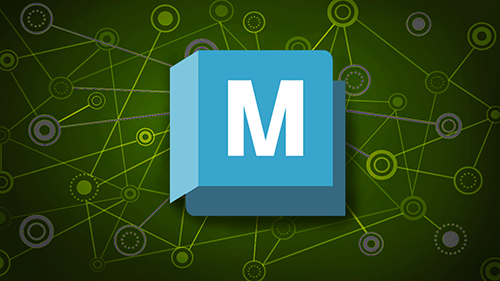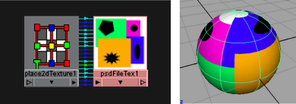Maya Creative supports a wide array of formats to let you share files between many applications.

There are some unsupported nodes if you are working with scenes containing Maya nDynamics or external/custom plug-ins ('external plug-ins' are tools that do not come installed with Maya Creative.) See Maya Creative unsupported nodes for a detailed list.
Save scenes as .ma and .mb
USD
Universal Scene Description (USD) support in Maya Creative lets artists work seamlessly with USD in conjunction with Maya workflows. The pre-built Maya USD open source plug-in is available on Windows and Mac. See USD Plug-in for Maya for more information.
PSD support

You can use .psd (Photoshop Document) files in Maya Creative texture nodes. Using PSD files with layer sets facilitate iterative painting.
- Adobe Photoshop artists can add, modify, or delete any number of layers within a layer set while maintaining the connections in Maya (see also Create a PSD file with layer sets from within Maya).
- Maya artists can convert a PSD node to a Layered Texture, and see the layer sets as multiple
PSD File Textures connected to a layered texture in
Hypershade.
Note:
Maya treats all layers within a layer set as a single flattened image.
For more information, see Use PSD Networks as textures and Edit PSD Networks.
Alembic Support
Maya Creative also saves and loads scenes and geometry as Alembic-based cache files. Alembic files are highly portable and application dependent, meaning they can be shared, processed, and played back by a number of content creation applications.
For more information, see the topic Alembic Caching.
Topics in this section
- Send objects to other applications
- Send objects to 3ds Max
- Send Control rigs to MotionBuilder
- Send polygons to Mudbox
- Export a scene to Unity
- Export a scene to Unreal Engine
- Import files with Autodesk Translation Framework (ATF)
- Export files with Autodesk Translation Framework (ATF)
- Maya FBX Plug-in
- Working in Maya in different scales
